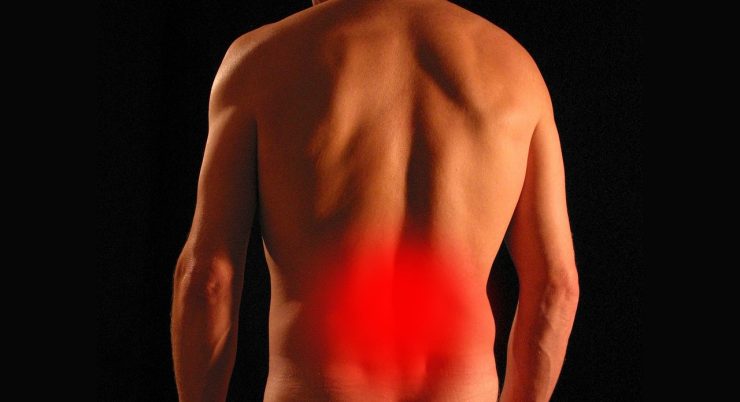Pain, Aging & Inflammation—What’s Really Going On?
Let’s be real—getting older often comes with more aches and pains. Stiff joints, sore muscles, and a growing list of things that end in “-itis” (hello, tendonitis, bursitis, and arthritis). But here’s something not everyone realizes: all those “-itis” conditions have one thing in common—inflammation.
Now, inflammation usually gets a bad rap, but it’s actually part of your body’s natural healing process. When you get a cut, a bruise, or burn your hand, your body responds with inflammation—sending more blood flow to the area, causing swelling, redness, heat, and pain. That’s how your body starts to fix things.
Pain is a signal—your body’s way of saying, “Hey! Something’s not right.” It’s there to protect you from making things worse. There are even rare cases where people can’t feel pain at all, and while that might sound like a superpower, it’s actually dangerous. Without pain as a warning, injuries can go unnoticed and untreated.
Where Pain Comes From
Whether the pain is sharp, dull, stabbing, burning, or just an annoying ache, it usually traces back to one thing—inflammation. Inflammatory chemicals like cytokines and neuropeptides are involved in both healing and triggering pain.
So if you’re in pain, inflammation is usually somewhere in the mix.
Acute Pain vs. Chronic Pain
-
Acute pain: Comes on fast—usually from an injury or infection—and typically gets better as your body heals (think a few days to a few months).
-
Chronic pain: Sticks around for months or even years. It can start from an old injury, a health condition… or sometimes for no clear reason at all.
When inflammation doesn’t shut off properly, it can turn on your own body, damaging healthy tissues and creating a vicious cycle of chronic pain. This kind of low-grade, long-term inflammation is linked to serious conditions like heart disease, cancer, diabetes, fibromyalgia, and autoimmune disorders.
About 1 in 5 people will develop chronic pain at some point. Common types include:
-
Back or neck pain
-
Joint pain/arthritis
-
Nerve pain (neuropathy)
-
Migraines
-
Muscle pain
-
Digestive discomfort
-
Even emotionally-driven (psychogenic) pain
Chronic Pain = Chronic Stress
Living with pain every day is exhausting—and it doesn’t just affect your body. Chronic pain can seriously mess with your mood, sleep, energy levels, relationships, focus, and overall quality of life. Over time, it can literally change your brain.
People with chronic pain are about four times more likely to suffer from depression or anxiety. And the worse the pain, the more it limits your ability to do basic things like work, exercise, or even get dressed on your own.
New Research: Pain Mapping
Scientists recently discovered that where you feel your pain can say a lot about what kind of pain you have—and how you’ll respond to treatment. Patients tend to fall into nine general pain “patterns,” and mapping these can help doctors predict everything from physical function to mood, sleep, and even long-term outcomes.
How Conventional Medicine Handles Pain
Most doctors will start with symptom-based treatments, like medication, and maybe imaging (MRI, CT scans) or lab work. The issue? They often treat pain without addressing the root cause.
And while medications can help, they come with risks:
-
NSAIDs (like ibuprofen) can cause stomach issues or liver damage.
-
Opioids are highly addictive and can actually increase pain sensitivity over time.
-
Even common meds like Tylenol can blunt emotions and reduce empathy.
Surgery is another option, but it’s usually a last resort—and the success rate can be hit or miss, especially for chronic back or joint pain.
Alternative & Natural Pain Management Options
Here’s where things get exciting—there are lots of non-drug, non-surgery approaches that can really help:
Nerve Blocks
Like an epidural during labor, but for chronic pain. These can give immediate relief and help nerves heal, though they usually aren’t permanent.
TENS Units (Electrical Stimulation)
Mild electrical impulses can reduce pain signals to the brain. Great for muscle pain, joint pain, and even arthritis.
Movement Therapy
Physical therapy, stretching, yoga, tai chi, and gentle strength training help improve blood flow, reduce stiffness, boost endorphins, and support brain health. Exercise is huge when it comes to managing pain.
Chiropractic Care & Acupuncture
Both focus on realigning or rebalancing the body—and many people get great results with regular sessions.
Massage Therapy
Helps ease muscle tension, reduce stress, and increase feel-good hormones.
Meditation & Mindfulness
Believe it or not, meditation can literally change how your brain processes pain. One study showed a nearly 40% reduction in pain intensity after just five days of mindfulness practice!
Food’s Role in Inflammation and Pain
What you eat can make a massive difference. Some foods fuel inflammation, while others help fight it.
The Worst Offenders:
-
Sugar
-
Processed/junk food
-
Refined grains
-
Vegetable/seed oils (like canola, soybean, corn, sunflower)
-
Gluten (for some)
-
Nightshades (like potatoes, tomatoes, and peppers—can worsen joint pain)
-
Commercial dairy
-
Alcohol (especially in excess)
Even foods that seem healthy (like nut butters or store-bought veggie oils) can spike omega-6s and cause flare-ups.
The Best Anti-Inflammatory Foods:
-
Omega-3 fats: wild fish, grass-fed beef, pasture-raised eggs
-
Monounsaturated fats: olive oil, avocado, coconut oil
-
Healing proteins: clean, organic meat and seafood
-
Dark leafy greens, cruciferous veggies (broccoli, cauliflower), beets, sweet potatoes
-
Anti-inflammatory fruits: berries, cherries, grapes, pineapple
-
Herbs & spices: turmeric, ginger, garlic, cinnamon, rosemary, chili peppers
-
Teas: green, white, rooibos, oolong
Bonus: Try a food elimination diet if you’re not sure what’s triggering your pain—it can be a game-changer.
Supplements That May Help
Here are a few natural options to support your body’s healing:
-
CBD oil: reduces pain without the high; helps with inflammation and nerve pain
-
Collagen: supports joints, gut health, and connective tissue
-
B Vitamins: especially B6 and B12 for nerve-related pain
-
Vitamin C: helps with inflammation and oxidative stress
-
Magnesium: eases muscle tension, nerve pain, and helps you sleep
-
Resveratrol: anti-aging, nerve-calming, and pain-reducing
-
SAM-e: great for joint pain and mood balance
Big Picture: Lifestyle Still Matters
You can’t out-supplement a stressful, sedentary lifestyle. These habits lay the foundation for less pain and more vitality:
-
Quit smoking (if you haven’t already)
-
Prioritize sleep
-
Keep moving—even just a walk helps!
-
Practice stress relief (meditation, deep breathing, journaling, nature walks)
-
Eat whole, nourishing food as often as possible
Pain is complex. It’s not just physical—it’s emotional, mental, and sometimes even social. But the good news is: you’ve got options, and you’re not stuck.
Here’s to feeling better, living well, and taking your health into your own hands—one step at a time.











